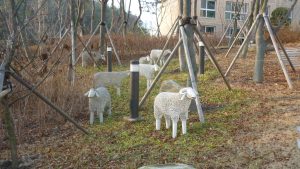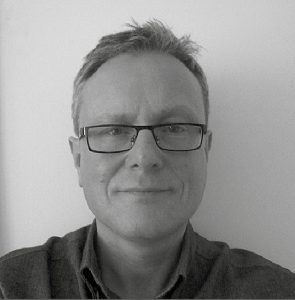7
Robert Cowley, University of Westminster, UK
My title is, of course, a provocation. I don’t seriously advocate a wholesale return to ‘top-down’ modernist planning. But I want here to outline a series of tensions between the idea of planning and the goal of urban sustainability. I propose that, in the absence of their resolution, a less extravagant set of ambitions may enable more productive approaches to our global future, and that top-down planning may – in certain circumstances – play a useful role. The discussion considers the case of Sejong City, currently under construction in South Korea.
It would seem eccentric to refute the attractiveness of the goal of sustainability more generally, even if its concrete meaning and implications have remained elusive. While, though, sustainability explicitly asserts our responsibility towards the future, its global rise as an agenda has coincided with a loss of faith in our ability to ‘plan’ anything in a traditional sense. Planning has come to appear hubristic (Van Assche & Verschraegen, 2008); our contemporary sensibility renders the world as complex, uncertain, and non-linear (Chandler, 2014a). The ‘city’, meanwhile, has become an increasingly powerful imaginary, concentrating our hopes for the future (Caprotti, 2015), with urban sustainability initiatives being increasingly ‘mainstreamed’ globally in recent years (Joss, 2011; Joss et al., 2013). But the often eulogistic rhetoric of contemporary city-level policy may obscure the fuzziness of its imagined target. If cities are quintessentially complex entities, the real, emergent city will always exceed the horizon of the planned one; no city will ever be sustainable in the ways envisioned.
Fundamentally, urban planning continues to provide “a simple and highly structured view of the world and how to act in the face of inherent complexity” (Allmendinger, 2002:42). Especially in the developing world, traditional technocratic ‘masterplanning’ approaches prevail (Watson, 2009). And yet it has also gradually shifted over time to embrace more communicative, inclusive practices, and from technocratic positivism towards a valorisation of contextually embedded discursive truths, reflecting the broader displacement of top-down ‘government’ by multi-actor practices of ‘governance’. But if it has thereby become “underpinned by an anti-realist ontology” (Harrison, 2014:65), its “capacity to engage meaningfully with the materiality of space” (ibid) may be diminished. As a ‘wicked’ problem, climate change may invite non-linear, pragmatic modes of problem-solving; but as a very real and material one, it also demands urgent and substantial actions.
Perhaps we should reject the idea of planning altogether. The rise of ‘DIY’ urbanism (see eg: Iveson, 2013; Finn, 2014), for example, seems well aligned with the “growing shift in policy-thinking, away from finite and deterministic ‘outcomes’ and towards autonomous open-ended processes” (Chandler, 2014b). But the unguided collective agency of civil society and the market seems unlikely to avert catastrophic climate change. Worshipping ‘smartness’ and efficiency as the inevitable fruits of emergent intelligence may mean ignoring the structural causes of unsustainability. And civil society is reactionary as often as it is progressive. If climate change does indeed pose a significant threat, might there be a role for stronger governmental involvement in facing up to it? Giddens, for example, argues that “[u]nregulated markets” will fail to tackle such problems because they have “no long-term perspective” (Giddens, 2009:128). Let us, then, entertain the possibility that some form of strong state-centric planning is capable of yielding short-term results which, even if potentially inelegant or circumscribed in their aspirations, would at least be substantial.
A return to top-down planning seems unfeasible in most countries. But the case of Sejong City, in South Korea, suggests its validity as an approach in certain contexts. Sejong has been enabled by a turbulent history of political ambitions, a tradition of state-led mega projects, and colossal state expenditure – projected to be around ₩22.5 trillion (£15 billion). Environmental friendliness is only one of its aspirations but, unlike many other envisioned ‘eco-cities’, it is rapidly taking shape. Meticulously planned to cover 73 km2 of previously agricultural land in the country’s center, it should house up to 500,000 residents when completed in 2030, and already has a population of 30,000.

In sustainability terms, eyebrows might be raised about the resources required to build Sejong, its provision for car use, and active embrace of global circuits of commerce. And yet it will still be a more eco-friendly development than most. One particularly innovative feature is its ‘ring-shaped’ layout: the large forested park at its centre is encircled by dense buildings and rapid, regular buses. The residential quarters are engulfed in greenery and leisure facilities. Among Korean commentators, some metropolitan snobbery is evident, akin to that directed towards Milton Keynes in the UK, with Sejong likened to a ‘ghost town’ (e.g.: Korea Times, 2011; Mundy, 2013). But its design deliberately aims to avoid the congestion of capital city Seoul. It may become a wonderful place to work and bring up children, even though it lacks a city-like ‘buzz’.


There is a case to criticise Sejong for its ‘non-cityness’. I am concerned that the ‘city’ in visions of urban sustainability is often a rhetorical construct obscuring more specific (and not necessarily sustainable) underlying agendas. And Sejong’s promotion as “the utopian city for everyone” (MACCA, 2012) might reasonably be criticised for its vacuity. But perhaps cityness is more a descriptive than an aspirational quality. Sejong may not have universal appeal – its current demographic profile is skewed towards younger married couples – but not all places can be all things to all people. In practice, if not by intention, different types of inclusion and exclusion seem inevitable everywhere.
Sejong is not a groundbreaking new paradigm for life on a sustainable planet; nor does it resolve the dilemma of the impossibility of planning for urban sustainability. A fair evaluation would instead treat it as more of an experimental stepping stone – as a particular, contextually embedded human settlement. In this context, top-down planning has delivered something which may at least offer some useful specific lessons for our collective future, either in its concrete socio-technical innovations, or following ongoing critical reflection. And, on these more modest criteria, I think there’s every chance of it succeeding.
References
Allmendinger, P. (2002). Planning Theory. Basingstoke: Palgrave Macmillan.
Van Assche, K. & Verschraegen, G. (2008). The Limits of Planning: Niklas Luhmann’s Systems Theory and the Analysis of Planning and Planning Ambitions. Planning Theory, 7(3): 263–283.
Caprotti, F. (2015). Eco-Cities and the Transition to Low Carbon Economies. Basingstoke: Palgrave Macmillan.
Chandler, D. (2014a). Resilience: The Governance of Complexity. Abingdon: Routledge.
Chandler, D. (2014b). Beyond neoliberalism: resilience, the new art of governing complexity. Resilience, 2(1): 47–63.
Finn, D. (2014). DIY urbanism: Implications for cities. Journal of Urbanism: International Research on Placemaking and Urban Sustainability, 7(4): 391-398.
Giddens, A. (2009). The Politics of Climate Change. Cambridge: Polity Press.
Harrison, P. (2014). Making Planning Theory Real. Planning Theory, 13(1): 65–81.
Iveson, K. (2013). Cities within the City: Do-It-Yourself Urbanism and the Right to the City. International Journal of Urban and Regional Research, 37(3): 941–956.
Joss, S. (2011). Eco-Cities: The Mainstreaming of Urban Sustainability – Key Characteristics and Driving Factors. International Journal of Sustainable Development Planning, 6(2): 1–18.
Joss, S., Cowley, R. & Tomozeiu, D. (2013). Towards the ‘ubiquitous eco-city’: an analysis of the internationalisation of eco-city policy and practice. Urban Research and Practice, 6(1): 54–74.
Korea Times (2011). Fear of ghost town. 13 May. Online: https://www.koreatimes.co.kr/www/news/opinon/2014/08/202_86954.html (accessed 20 May 2015).
MACCA (2012). The City of Happiness Sejong. Sejong City: Multifunctional Administrative City Construction Agency.
Mundy, S. (2013). South Korea’s $21bn alternative to Seoul lacks transport and soul. Financial Times, November 19. Online: http://www.ft.com/cms/s/0/ba9646f6-4dc6-11e3-8fa5-00144feabdc0.html#axzz3EcmzQQGe (accessed 20 March 2014).
Watson, V. (2009). ‘The planned city sweeps the poor away…’: Urban planning and 21st century urbanisation. Progress in Planning, 72(3): 151–193.
Author Biography
Robe rt Cowley is currently finalising a PhD thesis on Eco-Cities: Technological Showcases or Public Spaces? in the Department of Politics and International Relations at the University of Westminster. The project examines the socio-political dimensions of urban sustainability, with a particular focus on the ‘publicness’ of planned and implemented eco-city initiatives, and including fieldwork in Portland, Oregon (USA) and Sejong City (South Korea). He also works as a Visiting Lecturer at Westminster, and as the Network Facilitator for the Leverhulme Trust-funded Tomorrow’s City Today international research network. He has co-authored several publications and given lectures at several universities internationally on the subject of the eco-city. Before beginning his PhD, he took an MA in Urban and Regional Planning at the University of Westminster.
rt Cowley is currently finalising a PhD thesis on Eco-Cities: Technological Showcases or Public Spaces? in the Department of Politics and International Relations at the University of Westminster. The project examines the socio-political dimensions of urban sustainability, with a particular focus on the ‘publicness’ of planned and implemented eco-city initiatives, and including fieldwork in Portland, Oregon (USA) and Sejong City (South Korea). He also works as a Visiting Lecturer at Westminster, and as the Network Facilitator for the Leverhulme Trust-funded Tomorrow’s City Today international research network. He has co-authored several publications and given lectures at several universities internationally on the subject of the eco-city. Before beginning his PhD, he took an MA in Urban and Regional Planning at the University of Westminster.
Contact Details:
Address: University of Westminster, 32-38 Wells Street, London W1T 3UW, UK
Email: r.cowley@westminster.ac.uk
